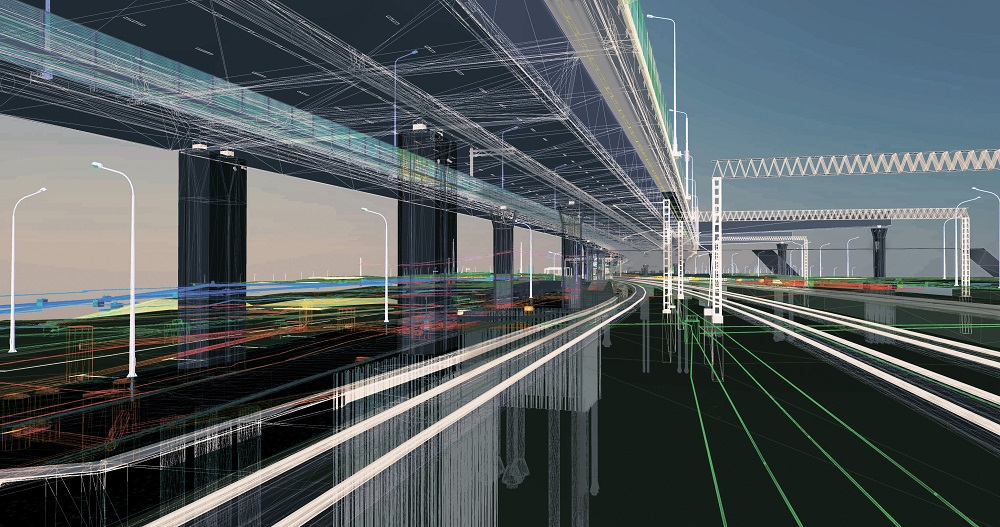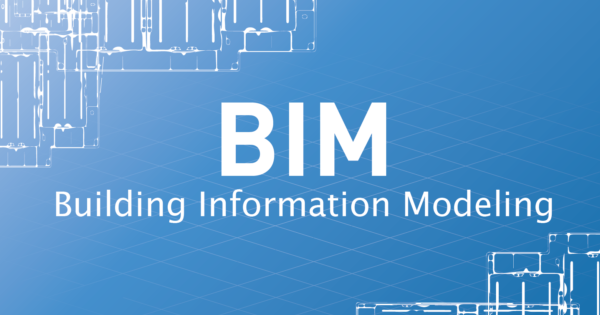What is BIM management? What does the career role involve?

Table of Contents
In modern construction, BIM management sits at the center of how buildings are planned, coordinated, and delivered. As projects grow more complex, AEC firms, contractors, and consultants rely on BIM Managers to connect teams, tools, and data so work stays accurate and on schedule. This guide breaks down what BIM is, what BIM management means, what a BIM Manager does, the skills and salary you can expect, and how this career can grow in the digital construction space.
What is BIM?

BIM, or Building Information Modelling, is a process that helps build a virtual building model of a project prior to physically constructing it. This allows project participants to design, analyse, sequence, and explore a project through a digital environment where it is far less expensive to make changes than in the field during construction, where changes are exponentially more costly.
The process also allows the integration of designers, construction professionals, and various other stakeholders to work together toward a common goal. They can all work on the same project simultaneously, and be informed about all the changes being made by a particular stakeholder on a model.
Everyone is on the same page and continuously updated, virtually, saving valuable time and money. It also allows professionals to keep clients in the loop on new developments and project models. Design and construction activities can therefore unfold in the best way for the project, rather than being locked into separate phases.
What is BIM Management?
To understand what BIM management is, let us first understand what project management in architecture is and then draw parallels. British Standards Institute (2010) defines project management as “the planning, monitoring and control of all aspects of a project and the motivation of all those involved in it to achieve the project objectives on time and to the specified cost, quality, and performance.”
The adoption of BIM into mainstream construction management practice has taken the typical constructs of what it meant to be a project manager and transformed them into a new way of looking at how we work.
What Does BIM Management Consist Of?

The importance of management lies in the very definition of BIM. One can discern key themes of “collaboration,” “coordination,” “communication,” “exchange” and “collation”. BIM managers thus occupy a central role in the development process driving successful completion of projects.
At the project level, BIM Management involves the following three key aspects (British Standards Institute, 2013) :
1. Employer’s Information Requirements (EIR)

The role of the BIM manager in developing the EIR is crucial. The EIR refers to a document that defines the uses of and requirements for BIM from the Project Sponsor’s perspective - answering questions like who, what, why, how, and when the various processes of BIM will be performed. After the EIR has been defined, a Project Implementation Plan (PIP) pertaining to BIM implementation is prepared. PIP describes the project team members’ information technology and human resources capability to deliver the EIR.
2. BIM Execution Plan (BEP)
The BIM manager plays a crucial role in the development of the BIM Execution Plan that defines how the team will deliver the EIR. The BEP consists of the following key items:-
BIM use cases for each stage of a project and its integration with project management functions,
-
BIM deliverables for each BIM use case,
-
Model author and users for each BIM deliverables,
-
Model elements, level of details and attributes for each BIM deliverable,
-
Process for BIM creation, maintenance, release and collaboration for each BIM use case, and
-
Hardware and software environment.
Also Read: Top 7 Places to Learn BIM (Building Information Modelling) in India
3. Master Information Delivery Plan (MIDP)
This is a plan listing all the information deliverables of a project including models, drawings, specifications, equipment, and schedules. An MIDP identifies when project information is to be prepared, by whom, and using what protocols and procedures. With the help of the MIDP, the project manager can define the overall project schedule and its linkage to BIM deliverables.
BIM Manager : Detailed Career Information

To understand the role of a BIM Manager, let us first understand the BIM hierarchy of roles. Understanding this workflow would help you understand the different professionals’ roles and responsibilities.
The professionals in the workflow include:
-
BIM Modeller: The BIM modeller is the person who actually makes the model.
-
BIM Specialist: The BIM specialist brings input to the model. He (or she) has the technical knowledge that needs to be brought into the model and his/her respective field.
-
BIM Coordinator: BIM Coordinator develops and maintains BIM protocols and Execution Plans while coordinating work information flows. A BIM Coordinator reports directly to project leadership but is also overseen by the BIM Manager.
-
BIM Manager: A BIM manager is the project lead and the primary point of contact for the various BIM coordinators within a project. His/her end responsibility is to deliver a qualitative model (on time) which can be used for the defined goals of the BIM and in that way support the construction process. He/she structures the entire project and performs the several project management tasks mentioned above.
1. Roles and Responsibilities

It is important for the BIM manager to understand how their BIM and project management roles spread across the project life cycle. This will ensure that the BIM manager is asking the right questions and confirming that activities and functions are implemented at the right time by the right set of project team members. The table given above lists the BIM roles of a project manager linked to the project life cycle.
Amongst his/her varied roles include:-
Set the LOD (Level of Details - an industry standard that defines how the 3D geometry of the building model can achieve different levels of refinement),
-
Define the modelling environment (what models will be made, how will they be referring/linked to each other, define server setup, write down communication protocols, what standards are used, how will information be sorted and organised in the model, etc),
-
In conjunction with the construction team, the BIM Manager will setup a time schedule for output deliveries,
- Host BIM team meetings
- Organise coordination sessions between the disciplines (set up clash reports in advance, however this can be delegated to a coordinator),
- Coordinate between different BIM coordinators.
Also Read: How BIM is Redefining Project Planning & Management for Professionals
2. Skills and Certifications Required
The knowledge, skills, and experience required to become a BIM Manager include:-
A degree qualification in architecture, engineering and a member of a professional institute
-
Certification of BIM competency
-
Proficiency in the application of Revit
- Experience in delivering training to technical and non-technical people
-
Excellent knowledge of Microsoft Office
- Ability to foster a culture of knowledge sharing and continuous improvement
- Ability to communicate effectively, maintaining relationships at all levels, internally and externally.
- Good organisation skills and an ability to work under pressure to meet deadlines.
- An interest in project leadership
Want to advance your career in the field of BIM? Check out: 6 BIM Certifications You Can Get for Career Advancement
3. BIM Manager Salary

One can become a BIM Manager after 5-7 years of experience and get a minimum salary of ₹75,000/month. In relatively small firms, BIM Managers would be the expert BIM designer. They coordinate with other designers and make them follow the industry standards of modelling. In MNCs (Multinational Companies), BIM Managers are recruited specifically for this job.
4. Difference between a BIM Manager and a Project Manager
It is easy to get confused about the difference between a BIM Manager and a Project Manager, as the tasks of the roles overlap.
The importance of the Project Manager lies in the design, the calculation, the site planning, etc. The role of BIM Manager, on the other hand, involves the execution of the project, control, quality, leadership tasks, etc. To put it simply, architects and engineers design, calculate, and generate the project (overseen by the Project Manager), and BIM helps to make it a reality and deliver it (overseen by the BIM Manager).
BIM can also help in the design process, and that is why many Project Managers are expected to have a good understanding of BIM these days.
Growth Prospects

The future of BIM Managers is exciting, and can be categorized into three important areas:
1. Lead BIM Implementation
BIM Managers must play a proactive role in BIM implementation at both the project level and at the organisation level. This will drive holistic BIM implementation and help in attaining project-level and organisation-level goals set for BIM implementation. One major obstacle that BIM Managers need to ponder upon is resistance to change. Change is difficult for everyone, and BIM Managers need an empathetic and solution-oriented approach about it.
2. Stay Updated With New-Age Technology
BIM managers need to understand the new skills and competencies to fulfil their roles as the use of BIM becomes more pervasive in the industry. This will have a direct impact on the educational and training needs of the industry.
On the brink of this technological revolution, BIM will undoubtedly be at the forefront and BIM Managers - the leadership driving this change. The importance of this humongous role cannot be overstated. Their value and salaries in the industry are only expected to grow.
Also Read: BIM - What is it and Why is it so important for Architects?
Conclusion
BIM management has become a core part of how modern projects are designed and delivered, and BIM Managers now play a central role in connecting teams, tools, and information across the AEC industry. If you enjoy both technology and leadership, this career path offers strong growth, good salaries, and global opportunities.
To move toward a BIM Manager role, it helps to build a solid foundation in tools like Revit and Navisworks, then add structured BIM courses, certifications, and real project experience. Programs such as the BIM Professional Course for Architects by Novatr can help you understand BIM workflows end-to-end and build a portfolio that supports your next career step in digital construction management.
Head over to our Resources page for more insights on AEC careers, software & tools, and industry trends!
FAQs
1. What does a BIM Manager do?
A BIM Manager sets BIM standards, configures model environments, coordinates information flow between teams, reviews model quality, and supports project delivery using digital tools. They make sure the BIM process aligns with client requirements and project goals.
2. Is BIM management a good career?
Yes, BIM management is a strong career path, especially as more projects adopt BIM by default. It offers a mix of technical work, leadership, and problem-solving, with good long-term demand across architecture, engineering, and construction firms.
3. What is the salary of a BIM Manager?
BIM Manager salaries vary by country, experience, and company size. In India, many BIM Managers earn around ₹75,000 per month or more, with higher pay in large firms, metro cities, and complex infrastructure or international projects.
4. What is the difference between a BIM Manager and a Project Manager?
A Project Manager leads overall project delivery, scope, cost, time, and client communication. A BIM Manager leads digital delivery, models, data, standards, and coordination. They collaborate closely, but their primary focus areas are different.
5. What industries use BIM management?
BIM management is used across many sectors: commercial and residential buildings, infrastructure, transportation, industrial plants, healthcare, education, and large public projects. Any industry that builds complex assets can benefit from structured BIM processes and strong BIM Managers.

 Thanks for connecting!
Thanks for connecting!


.png)






